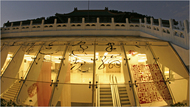After four years of renovations that closed two-thirds of the building, the museum housing the world’s most famous collection of Chinese art is reopening this winter and holding a three-month exhibition of its rarest works.
The National Palace Museum, home to the best of the 1,000-year-old art collection of China’s emperors, is often compared to leading Western institutions like the Louvre, the Prado and the Metropolitan Museum of Art. But while this museum’s holdings are magnificent, the institution has been known for being a highly politicized place where priceless porcelain sat in poorly lit display cases and where invaluable paintings were kept in a damp manmade cave for fear of Communist attack from mainland China.
That has now changed. Heroic statues of Chiang Kai-shek, Taiwan’s former leader, and of Sun Yat-sen, the founder of modern China, have been banished. New lighting, air-conditioning, climate-controlled storage vaults and other features rival the newest museums in the West. Even the wall labels attached to the artwork are now written in clear and specific Chinese, English and Japanese.[Full Text]









